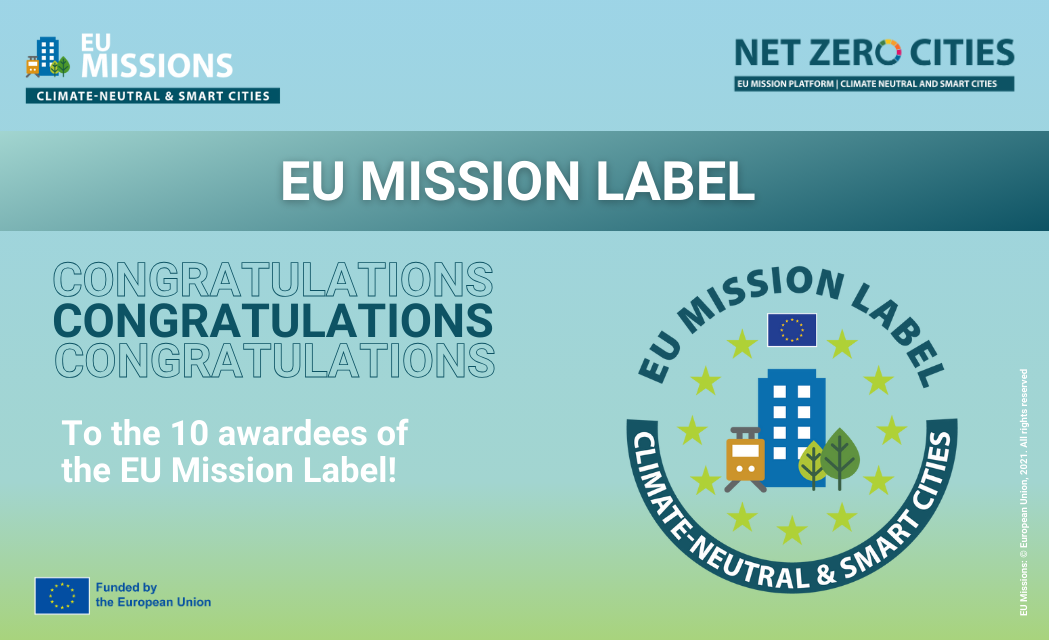“The first Mission Cities to secure the Mission Label is a milestone on their way to climate neutrality. We all know how big the challenge is and this key step is a sign of progress and momentum. The EU Mission Label has the power to significantly accelerate the climate transition journey for European Cities and unlock their potential.”, says Thomas Osdoba, Director of the Mission Platform, NetZeroCities.
After months of hard work and collaboration between Mission Cities, their local, regional, and, in some cases, national stakeholders—with the support of Mission platform partners across Europe—10 cities have had their Climate City Contracts endorsed by the European Commission.
The contracts include plans or “portfolios of actions” for climate neutrality by 2030 and this week cities received official recognition of their ambition as part of the Cities Mission and beyond, boosting their agency to implement their proposals.
In particular, the EU Mission Label aims to give public and private funders confidence in cities’ ambitious and comprehensive climate neutrality plans.
Who received the EU Mission Label?
Cluj-Napoca, Klagenfurt, Madrid, Mannheim, Sønderborg, Stockholm, Valencia, Valladolid, Vitoria Gasteiz, and Zaragoza are the first Mission Cities to be awarded the ‘EU Mission Label’ of the EU’s Mission for ‘100 Climate-neutral and Smart Cities by 2030’.
It is envisaged that many other Mission Cities will soon follow suit, as their climate plans are already rapidly under development. Together they are leading the way and inspiring other cities, as well as other levels of government and institutions.
What is a ‘Climate City Contract’?
Also known as ‘CCCs’, Climate City Contracts form the core of the Cities Mission and show in detail how cities intend to reach their 2030 climate neutrality target.
Developed by Mission Cities through close cooperation with local stakeholders and guidance from advisers on the Cities Mission, CCCs have far-reaching relevance for the cities involved and beyond, and are much more than a bureaucratic exercise.
The CCC is a governance innovation instrument that builds on the existing knowledge, resources, and experience of cities to help seize opportunities and overcome the barriers they face in working towards their climate goals.
And while many cities have already developed multiple plans and strategies related to climate goals or in specific key domains, like energy and transportation, CCCs aren’t expected to duplicate these.
Instead, they build on existing plans, encouraging coherence between them and, where necessary, accelerating both the pace and the scale of the measures proposed to progress towards the target of climate neutrality by 2030.
What do CCCs contain?
Each contract has three components—Commitments, Action Plan, and Investment Plan—and builds on knowledge and resources cities already have.
‘Commitments’ address the city’s shared climate-neutrality ambition, including how local, regional, and national stakeholders will work together to achieve it, which ideally involves new ways of collaborating.
The Action Plan identifies strengths as well as possible gaps in existing strategies, closely linked to the Commitments, with planned concrete actions, and includes explicit definitions of the amount of emissions that existing plans and strategies will credibly cut by 2030, prompting reflection on what is needed to address any shortfall.
Finally, the Investment Plan identifies the potential costs and associated investments needed, and the approaches to mobilise public and private resources and appropriately direct capital.
How are CCCs developed and why is it important?
Cities start from different points and contexts, and have different resources available, so each process is unique. If they have approved plans in place, they will already be closer to being climate neutral by 2030. Others may be starting to build the foundations of these elements.
What is most important is ensuring the process and outcome are meaningful and impactful in reducing the city’s emissions and at the same time ensuring that the transition is inclusive and does not leave anyone behind.
Through reflection, cities develop their CCC in an iterative manner. CCCs remain ‘living’ documents, so they will be constantly referred to and updated as new knowledge is gained and learnings emerge through implementation and exchanges with other cities.
The process of developing their CCC also helps cities and their transition teams to build capacities that will help them put the plan into practice over time. For example, building a comprehensive CCC requires cities to engage beyond a technical level and build their understanding of how the governance approach they have is helping or hindering efforts towards climate neutrality.
This relates to the iterative nature of CCCs: “There is a constant relation between implementing, measuring progress, evaluating what is working, and adjusting the plans accordingly, which will inform the next iterations of the CCC,” says Svea Heinemann, one of NetZeroCities Climate-Neutral City Advisors.
Who else is involved in the CCC?
The CCC process is also a valuable opportunity to get other actors behind the plan.
In reality, city administrations only have direct influence over a portion of the city’s total emissions. In order for the process to be a success, it is crucial that other actors are on board too and are given the space to lead this where necessary. They will be key to the actions and investments that are needed, so it makes sense to also involve them in helping to align and develop the plan.
To develop their CCCs, cities should engage with the whole city—first and foremost its citizens, including considering how they will be meaningfully involved as the plan is implemented.
This requires understanding of the value of citizen engagement and learning methods of doing so in an inclusive and meaningful manner. Involving them in dialogue and enabling them to shape the CCC’s development helps cities to build and strengthen the means to engage with citizens during implementation.
Cities should similarly engage civil society and the private sector to align ambitions and encourage organisations to pledge to support the commitments and work within the CCC. For many cities, engaging beyond their administration will need buy-in from across the political and demographic spectrum to create a long-term mandate for the CCC’s commitments and actions beyond the electoral cycle.
What is the next step for cities with the EU Mission Label?
Submitting a CCC and receiving a EU Mission Label is a major step in the transition to climate neutrality for Mission Cities, but they will need to carry on putting their plans into action, identify gaps and work on them, experiment, innovate, learn, and exchange knowledge with other cities to multiply the effectiveness of solutions.
This is an ongoing process, requiring sustained commitment from cities, but the support and guidance cities receive is also iterative and builds on the experiences and feedback of cities. This aims to streamline the process and help them answer the key questions for creating a coherent, impactful plan to close their emissions gaps using an approach that engages the whole city.
Cities will also continue to receive the support of the Mission Platform, as well as feedback on their CCCs, highlighting areas that could be developed further over time.
Receiving public recognition for their Climate City Contracts will be a milestone for cities on their transition journey and should give them and others confidence in working towards climate neutrality by 2030 and encouraging greater collective momentum on taking this necessary action.
Congratulations to those cities who have already received their EU Mission Label—their experience will be invaluable to other cities on the same path who are currently working on their portfolio of actions.
Read the European Commission’s press release HERE.





